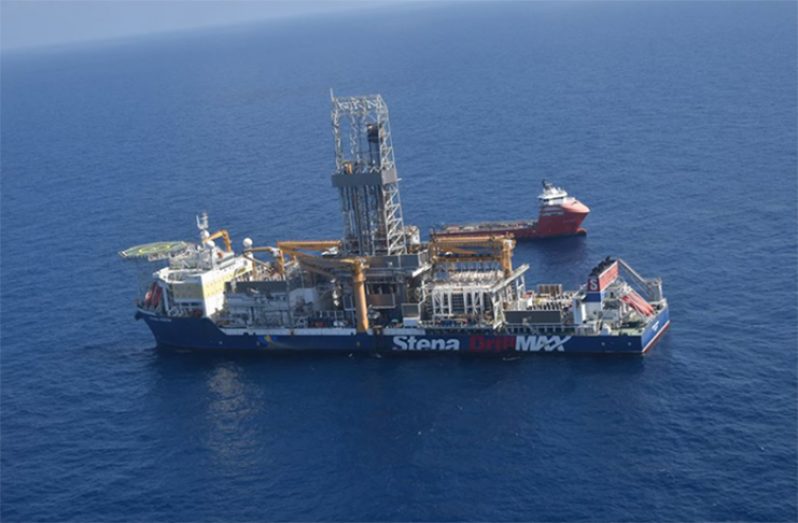-International organisations project major economic growth for Guyana with O&G
THE great Calypsonian, Dave Martins said in one of his biggest hits, “Guyana is we own,” a phrase which all Guyanese will be proud to say, especially at a time when the country is projected to lead economic growth on the back of a promising oil and gas industry.
Guyana, the sole English-speaking country in South America which has a population of about 750,000 people and is about 80 per cent forested, is set to take off and balloon in 2020 with what is expected to be a lucrative oil and gas sector. Testimony to Guyana’s potential rise in the global arena was the rating from New York-based stock market, NASDAQ, which listed the South American country as the fastest growing economy in the world. According to NASDAQ, Guyana’s projected growth rate from 2018-2021 is 16.3 per cent.
The stock market said that with a Gross Domestic Product (GDP) size of $3.63 billion (2018 Rank: 160), a growth rate of 4.1 per cent in 2018 and 4.6 per cent in 2019, Guyana’s economy is expected to grow by 33.5 per cent and 22.9 per cent in 2020 and 2021 respectively.
Those projections climbed in a report from the International Monetary Fund (IMF), which stated that Guyana’s real Gross Domestic Product (GDP) is expected to grow by approximately 86 per cent in 2020, almost twenty times more than the projected 4.4 per cent growth for this year.
The Economic Commission for Latin America and the Caribbean (ECLAC) has also forecasted a staggeringly high growth rate for Guyana for next year. ECLAC noted that Guyana’s growth rate is pegged at 4.5 per cent for this year, while next year it will be 85.5 per cent.
A report from Bloomberg stated that with such figures, Guyana’s GDP will grow fourteen times as fast as China’s next year. Further projections by the IMF showed that real GDP will grow by 4.8 per cent in 2021, 20.6 per cent in 2022 and 26.2 per cent in 2023. Guyana’s $4 billion annual GDP is also expected to expand to about $15 billion by 2024, said the IMF. The financial institution said the commencement of oil production will substantially improve Guyana’s medium- and long-term outlook. Guyana is projected to be among the world’s largest per-capita oil producers by 2025.
The oil sector is projected to grow rapidly, accounting for around 40 per cent of GDP by 2024 and supporting additional fiscal spending annually of 6.5 per cent of non-oil GDP on average over the medium term, which will help meet critical social and infrastructure needs
ECLAC said the Guyana Government will receive approximately 14.5 per cent of all oil revenue in 2020. In addition to potential oil revenues, there has already been a notable increased in the Foreign Direct Investments here. According to ECLAC, Guyana took in US$495 million in FDIs in 2018, which was more than double what it had received in 2017.
Investments
The steep upturn was driven by investments in the hydrocarbons sector, which accounted for 77 per cent of total FDI, much of which was channelled into the development of the oil fields discovered by ExxonMobil in 2015.
In the first phase of this venture, the Liza oil field is expected to begin producing up to 120,000 barrels of oil per day. The company estimates these oil reserves at 5.5 billion barrels. The Economist had reported that in a decade from now, Guyana could become the second-largest oil producer in Latin America and the Caribbean, after Brazil.
The World Bank had also noted that Guyana is now among the 25 largest oil reserve-holders in the world after a series of discoveries starting in 2015. “Well managed oil revenues can have a transformative and sustainable impact on a country’s development…Guyana today has an extraordinary opportunity to reduce poverty and bring long-term benefits to its people,” said Tahseen Sayed, World Bank Country Director for the Caribbean.
“Resource wealth can lift people out of poverty and boost human capital. But a robust policy framework with strong regulations and institutions is an essential prerequisite.
Through this technical assistance the World Bank will contribute to strengthening Guyana’s institutions and enhancing its legal and regulatory framework, maximizing the benefits of its natural resources,” said Christopher Sheldon, World Bank Practice Manager, Energy and Extractives Global Practice.
Director of Economics at the Caribbean Development Bank (CDB) Dr. Justin Ram had also urged that local stakeholders, particularly the government and private sector, be wary of typical pitfalls of the oil and gas industry.
“The oil industry is going to be booming. Those working in the oil industry… will be earning more money because they are internationally competitive, but when these folks get money in their pockets, they will want to buy things in society and people will know they have money, so prices are likely to rise,” he said.
“If you are going to be depleting the environment [capital], you need to ensure that whatever money you are getting from that, you are investing in other forms of capital so that your overall capital base remains the same, or is increasing and that will protect NNP,” he said.
Other policy areas that can be improved to boost Guyana’s economy, in the wake of the emerging oil and gas industry, according to the CDB representative, include: improving the ease of doing business, managing inflation, managing the exchange rate, engaging in sustainable expenditures, government saving for stabilisation and posterity and effectively managing the non-oil deficit to safeguard from the ‘Dutch Disease’.
As Guyana moves forward, with good plans, there could be expansion in construction, said the CDB. The CDB said commercial oil production will potentially lead to double-digit rates of growth in the medium term, and to significant hikes in government revenue.
Meanwhile, Norwegian Research Company, Rystad Energy had reported that the global oil industry is well on track to repeating the feat achieved in 2018, when around 10 billion barrels of oil equivalent (BOE) recoverable resources were discovered and Guyana is second on the list for the most discoveries so far for this year. According to Rystad, oil and gas companies have discovered 7.7 billion BOE to date.
The research company said Russia has seen the most discovered resources thus far in 2019, with the Dinkov and Nyarmeyskoye discovery announced earlier this year holding around 1.5 billion BOE of recoverable resources. Guyana and Cyprus nabbed the other places on the podium.
“The industry has high hopes after the prolific success of ExxonMobil’s Stabroek block off the coast of Guyana and more recent discoveries by other operators in the Region, which have led to a surge in offshore exploration in the Caribbean,” the company stated in its report.
More acreage is being made available for bidding, with some countries conducting their first-ever licensing rounds in 2019 and 2020. Offshore drilling activity has been on a steady rise in recent years, with 23 new exploration wells expected in 2019. By comparison, only seven offshore wells were drilled in 2013. Rystad Energy expects the Guyana-Suriname basin will continue to occupy headlines with a few planned wells in both Guyana and Suriname.




.png)









